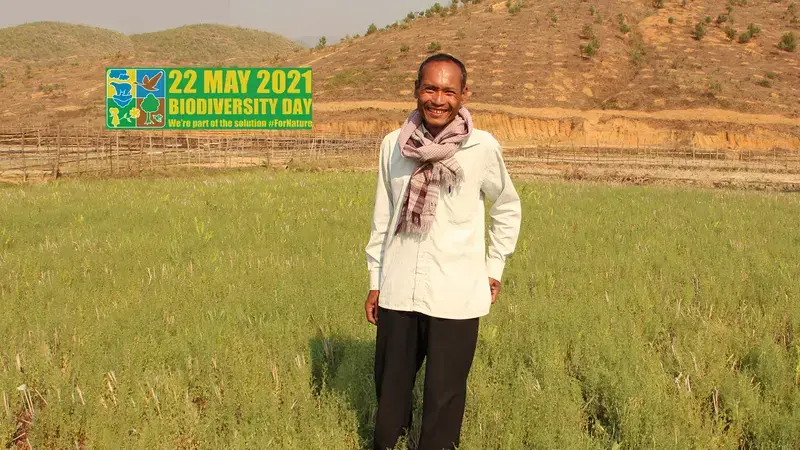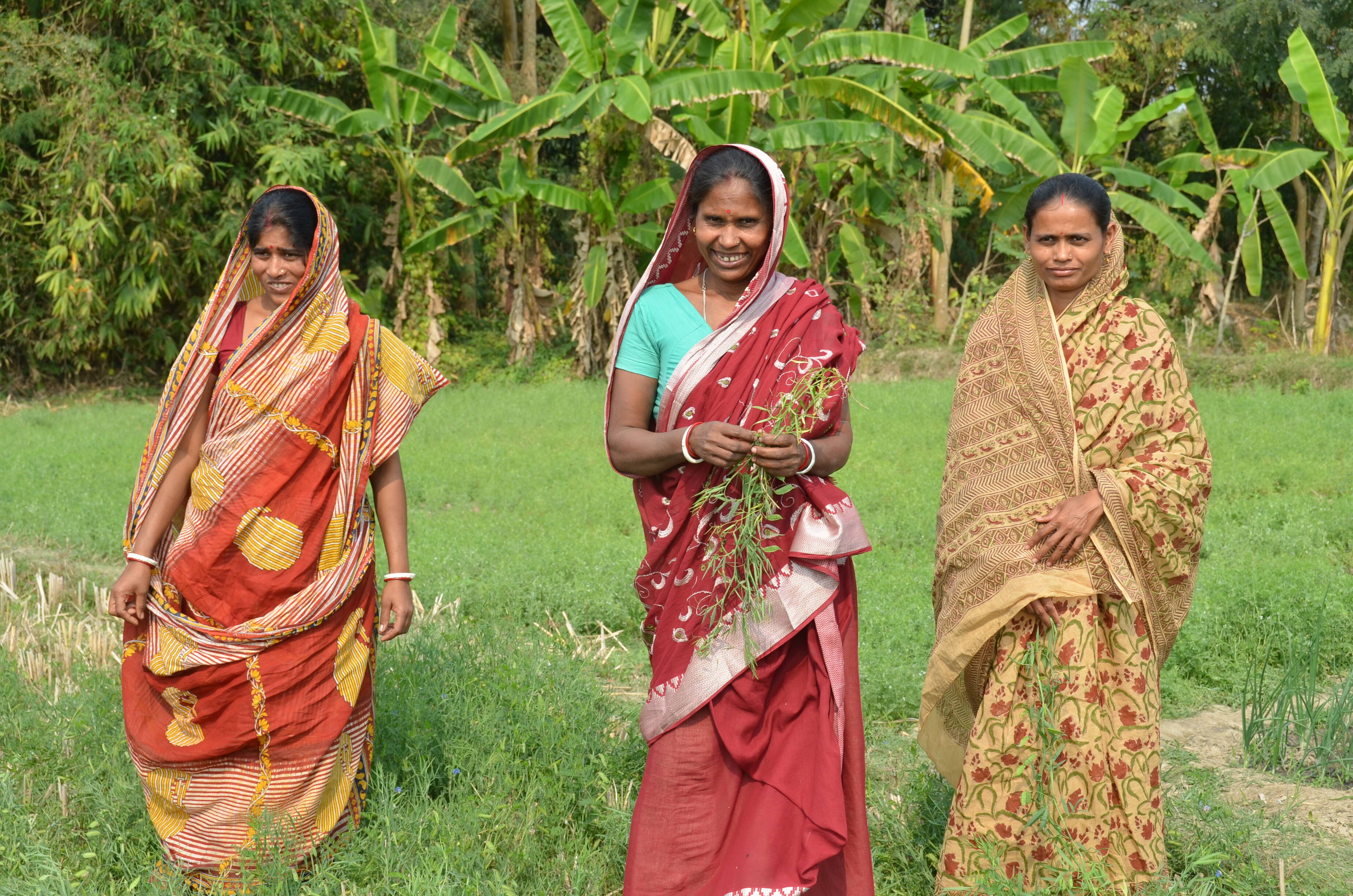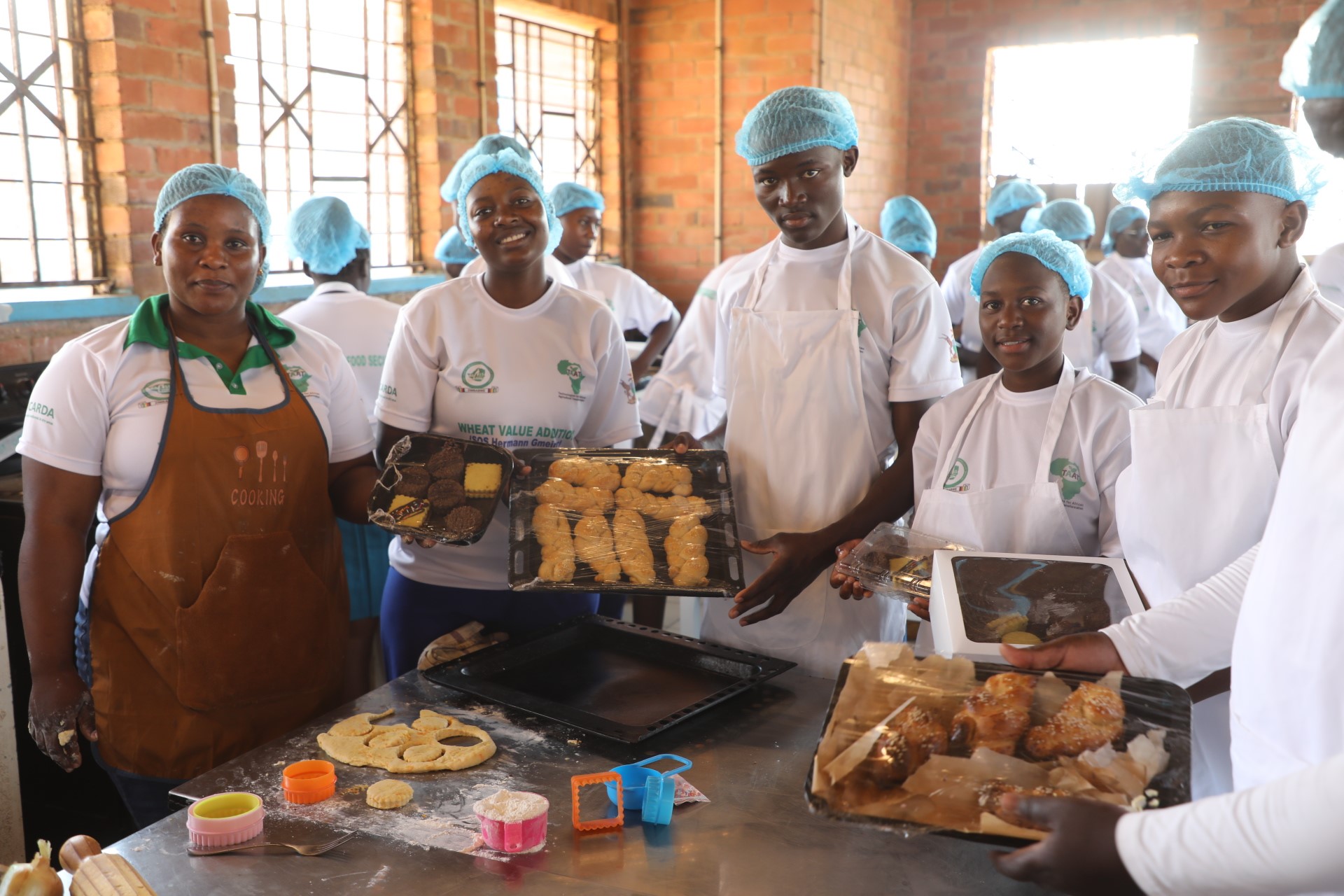It's not just about Wheat - How Diversified Cropping Systems help family farmers - and the planet.

To support dryland farmers’ livelihoods, income, and nutritional security as well as biological diversity and environmental sustainability, ICARDA, alongside its national and international partners and donors, promotes Diversified Cropping Systems (DCS) across Africa, Asia and the Middle East and North Africa (MENA) region.
The challenges faced by small-scale family farmers operating in the world’s drylands to produce nutritious and marketable food in reliable and sufficient quantities are countless.
It is in the driest regions of the globe that climate change-related shocks can be the most vividly felt - temperatures are soaring at unprecedented rates, freshwater supplies from rain, rivers and aquifers are shrinking, and pests and diseases proliferate.
All the while, biodiversity is declining due to inappropriate agricultural practices, and yields and production are struggling to keep up with rising demand.
The expansion of monoculture farming, where farmers intensively and repeatedly cultivate a single-type crop on the same tired land, while relying on large quantities of agrochemical inputs, has greatly diminished the presence of wild pollinators and natural pest-enemies, making crops increasingly unsuccessful and more vulnerable to pests, while the natural biodiversity of soil declines with every repeated crop to the point of collapse.
To support dryland farmers’ livelihoods, income, and nutritional security as well as biological diversity and environmental sustainability, ICARDA, alongside its national and international partners and donors, promotes Diversified Cropping Systems (DCS) across Africa, Asia and the Middle East and North Africa (MENA) region.
Diverse Cropping Systems go back to basics by merging local knowledge and traditional ways, with ICARDA’s cutting edge scientific innovations to reintroduce diverse, self-sustaining cropping systems with low environmental footprints to produce food, feed, and fiber, deliver crucial ecosystem services to safeguard biodiversity, biochemical nutrient cycles, and better regulate water use.

ICARDA promotes three types of Diverse Cropping Systems to improve the productivity, stability, and delivery of ecosystem services at the farm level:
- Crop rotation
- Intercropping
- Relay cropping.
In all three, the secondary crop, often a legume, a forage, or a cash crop -a fruit or vegetable- is integrated into a predominantly cereal-based system, with temporal and spatial differences.
In a crop rotation model for example, once the main cereal crop is harvested, the land is utilized to cultivate the secondary crop until the next cereal season. The nutritious residues it produces enrich the land, improves soil microbiome health, optimizes yields, and increases efficiency while conserving water and resources.
Since legumes capture nitrogen and fixate it in the soil, farmers’ reliance on nitrogen-based fertilizers is reduced, with positive impacts on the agroecosystem and local biodiversity. However, in particularly water-scarce environments, land can be left fallow following the cereal crop.
In late 2019, ICARDA scientists quantified the economic advantages of legume-cereal rotations over cereal monocropping in dry areas. The study, which took place in Morocco’s rainfed areas, involved 1230 family farming households over a period of two years.
With intercropping, the cereal and the secondary crop are cultivated at the same time and in close proximity to each other, and can be arranged in rows. This system enables a more efficient use of water and soil nutrients, which reduce the overall resources available to weeds, ultimately reducing their presence.
The other key benefit of intercropping, particularly in the dry areas, is the higher crop per drop ratio compared to monocultures. However, harvesting diversified fields is more labor-intensive than when one single crop is cultivated, which can lead to higher costs to farmers.

In relay cropping systems, the secondary crop is planted before the cereal crop is harvested. In India and other parts of South Asia, legumes are a mainstay of people’s diets, but production levels fail to keep up with the demand. Since 15 million hectares of arable land lie fallow for three months in between rice crops across the region, ICARDA scientists developed early maturing lentil varieties and used improved relay cropping techniques to significantly boost the legume production in the region and provide better nutrition and income to local farmers.
On Moroccan wheat fields, ICARDA agronomists demonstrated that a relay-cropping system with a combination of secondary crops (lentil/bean, lentil/chickpea, lentil/quinoa and lentil/onion) is far better at boosting farmers’ revenues per hectare than the original wheat-lentil association.
Diversified cropping systems have a myriad of beneficial impacts for soil quality, yields, nutrition, income, and biodiversity health.
Diversified cropping systems:
- Improve soil quality by rotations and/or mix of trees, cereals, legumes, roots, tubers, and vegetables.
- Mitigate heat waves by providing shelter for crops and animals when trees are planted.
- Diversify farmers’ crops and the food on their plates and improve nutrition security at household level.
- Enrich the soil microbiome, which is the best natural defense against soil-borne pests and viruses.
- Create additional jobs for men and women to manage diversified fields and landscapes not suited to large and automated machinery.
- Sustain pollinators and natural enemies to create higher net income per surface.
- Attract better market prices and create opportunities for men and women to develop value chains that support agroecological products.
- Reduce rural outmigration by creating better incomes, opportunities, and livelihoods even on small areas of land.
ICARDA, under the umbrella of CGIAR -the world’s largest agricultural research network- has worked for over four decades across the drylands of Africa, the Middle East, and Asia, and is ideally placed to conduct and integrate research at the design, management, and impact stages of diversified cropping systems.
Yet ICARDA’s goal to provide dryland farmers with the solutions they need to produce food is not limited to these regions. Already through initiatives such as the DryArc, and within global networks that encompass the USA and Australia, as well as CGIAR extensive network of global research centers, ICARDA’s open access research model, as well as its own outreach, allows it to collaborate with global scientists and share knowledge.
Most important are the farmers. Climate change affects agriculture all over the world, but nowhere more so than in the dry regions of Africa, the Mediterranean, Asia, the USA and Australia. Modern technology, and initiatives such as DryArc, allow farmers in these areas, who share similar challenges, to provide global knowledge, and test out solutions such as diversified cropping systems. It is the solutions, along with collaborative efforts, that may yet save the livelihoods of global farmers.
However, further global research urgently needs to be undertaken by ICARDA and its national partners to deliver compelling science-based evidence on the technical feasibility, affordable diversification options, and profitability of DCS in the drylands in terms of income, food security, nutrition access and biodiversity preservation.
-----------------
Further reading:
- Role of high-value, small-scale agricultural production in generating higher livelihoods for farm women in arid region of Rajasthan - https://repo.mel.cgiar.org/handle/20.500.11766/6519
- Explaining yield and gross margin gaps for sustainable intensification of the wheat-based systems in a Mediterranean climate - https://repo.mel.cgiar.org/handle/20.500.11766/6519
- Supplemental Irrigation in a Legume-Cotton Production System in India: Summary (wocat.net)



